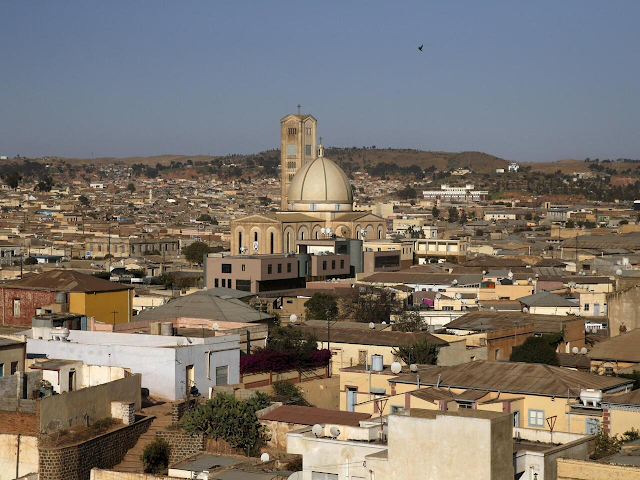Eritrea: On the Horn of Africa
Eritrea, a nation often overlooked on the Horn of Africa, offers a captivating blend of history, culture, and stunning landscapes that are just waiting to be discovered by the intrepid traveler. From its unique architectural heritage to its vibrant traditions and dramatic scenery, Eritrea promises an unforgettable journey.
Asmara: A Modernist Marvel
At the heart of Eritrea's appeal lies its capital, Asmara, a UNESCO World Heritage site renowned for its remarkably preserved modernist architecture. Often dubbed "Little Rome" or "Africa's Art Deco City," Asmara's streets are a living museum of Italian colonial design from the 1930s. Stroll through the wide boulevards and marvel at the cinematic lines of the Fiat Tagliero building, a futuristic petrol station shaped like an airplane, or the beautiful Art Deco stylings of the Cinema Impero. The city’s relaxed pace, clean streets, and numerous cafes invite visitors to soak in the unique atmosphere and imagine life in a bygone era.
A Rich Tapestry of History
Eritrea's history is as compelling as its architecture. Evidence of ancient civilizations can be found throughout the country, including the ruins of Qohaito, an ancient city with monolithic structures. The country's strategic location on the Red Sea has also made it a crossroads of cultures and empires, from the Aksumite Kingdom to Ottoman and Italian influences, all of which have left their mark on the Eritrean identity. The War of Independence, a long and arduous struggle, is a significant part of modern Eritrean history, and monuments and museums throughout the country offer insights into this period.
Beyond the Capital: Diverse Landscapes and Cultures
Venture beyond Asmara and you'll discover a land of striking contrasts. The coastal city of Massawa, with its Ottoman and Egyptian influences, boasts a charming old town built from coral, though it still bears the scars of past conflicts. The Red Sea itself offers incredible opportunities for diving and snorkeling, with vibrant coral reefs and abundant marine life largely untouched by mass tourism.
Inland, the dramatic landscapes range from the cool highlands surrounding Asmara to the scorching Danakil Depression, one of the hottest places on Earth, where salt caravans still traverse the stark terrain. This region, while challenging to access, offers a truly unique and raw experience for the adventurous.
Eritrea is also home to nine diverse ethnic groups, each with its own distinct language, customs, and traditions. Witnessing a traditional coffee ceremony, a fundamental part of Eritrean social life, is an absolute must – a ritual of hospitality and community that is both captivating and delicious.
Experiencing Eritrea: What You Need to Know
While Eritrea is an incredibly rewarding destination, it's important to be aware that tourism infrastructure is still developing. This means fewer crowds and a more authentic experience, but also requires a bit more planning and flexibility.
- Visas: Securing a visa in advance is essential.
- Currency: The Nakfa is the local currency.
- Getting Around: Taxis are readily available in Asmara, and buses connect major towns. For more remote areas, hiring a driver is recommended.
- Hospitality: Eritrean people are known for their warmth and hospitality, and you'll likely be met with genuine curiosity and kindness.
Eritrea offers a truly off-the-beaten-path adventure for those seeking a unique and enriching travel experience. Its captivating history, stunning architecture, diverse landscapes, and welcoming people combine to create a destination that will leave a lasting impression. Discover Eritrea – a hidden gem waiting to be explored.




